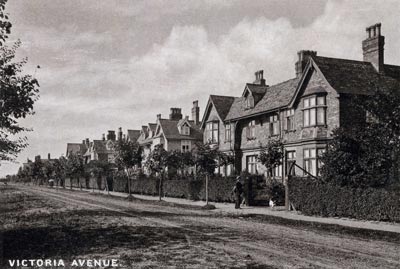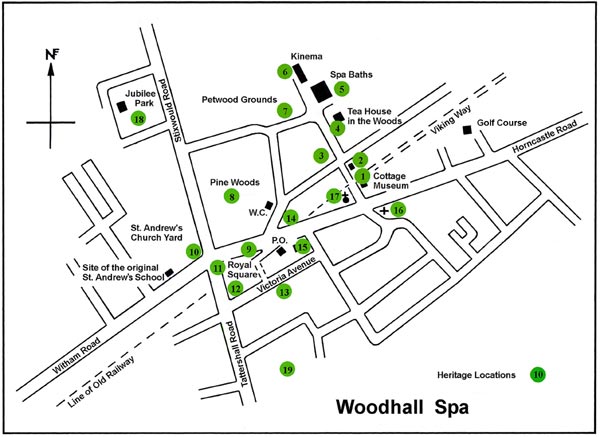Heritage Trail Location 3
In 1886 a group of investors formed a Syndicate to develop the Spa Baths and Victoria Hotel. They commissioned London architect, Richard Adolphus Came, to take charge of the development and to design the village. He laid out plans on the lines of a garden city, in the then fashionable German spa rustic style, with a wide and straight main road called “the Broadway”, a shopping mall and tree lined roads and avenues. He stipulated that there were to be no thoroughfares named “streets.”
One of the first of these was Victoria Avenue, named after the Queen who was still the well- respected monarch of this country.
Some of the early properties were designed as guest houses. The guests would inhabit the best rooms at the front and the owners lived at the back. The early ones, built between 1884 and 1890, have facades of decorated clay tiles. The first houses on Victoria Avenue were designed by Richard Adolphus Came himself.
Some of the large villas were designed with the front door at the side so that people residing there could step straight from their porch into the carriage on the drive of the property.
By 1890 there were 100 dwellings in the Spa, of which 25 were boarding houses. One property on Victoria Avenue designed specifically for visitors was “Sylvanhay,” which is still so called and which in those early days was run by Miss Meshulemeth Harding.
It has been observed that money conscious builders existed in those, as well as our times, as bricks used for the front elevation of the houses are often of a superior quality to those on the side or rear.
Modern bungalows in Victoria Avenue, near Tattershall Road, were built on land which previously belonged to the Royal Hotel. These grounds were detached from the main Royal Hotel grounds by the railway line, which ran behind the Mall Hotel. They were accessed by a footbridge near the Tattershall Road railway crossing. They included the present Clarence Road and contained landscaped gardens and tennis courts and a bandstand on the Victoria Avenue side of the land.

Heritage Trail locations

The trail can be started at any location, but we suggest you also visit the Cottage Museum to see the photographs taken by John Wield during the heyday of the Spa and items associated with this unique Victorian Spa town.
The Trail is just one of several projects in the hands of the Woodhall Spa Parish Council sponsored Heritage Committee. Click here if you are interested in the committee or their projects.
How well do you know Woodhall Spa?
See if you can identify the location of these architectural features and items of street furniture
Find out more about the Woodhall Spa Conservation Area